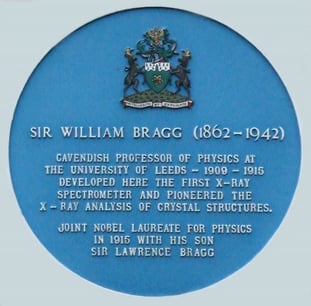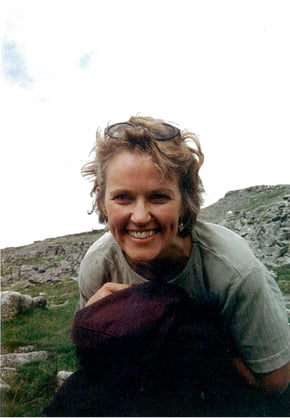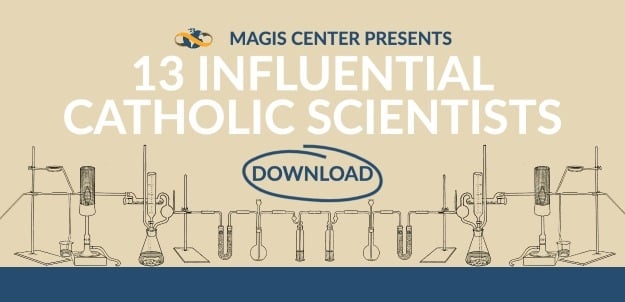Fathers will get gifts and have special meals prepared for them this coming Sunday, and rightly so. It might add to the celebrations to recall the tale William Bragg, a father from history whose talent, character, and influence earned both him and his son, Lawrence, a Nobel Prize in Physics.
Born in England in 1862, William Bragg received his university education at Cambridge in Mathematics. At the age of 23, he was appointed professor at Adelaide University in Australia, where he was popular with students and science teachers alike. During this time, he met and became life-long friends with fellow Nobel Prize winner Ernest Rutherford.
Inventions: A Family Affair
Over the next ten years, Bragg’s interest in physics developed, especially in the area of electromagnetism. Inspired by the discovery of X-rays, he was able to develop a machine that created short bursts of X-rays. By 1896, Bragg demonstrated an application of this machine to a group of local doctors by taking an image of his own hand. The image revealed an old injury he had sustained as a child on his father's farm in Cumbria.
In 1897, Bragg successfully demonstrated wireless telegraphy at a Public Teachers Union conference, and by 1899, he and his father-in-law, Sir Charles Todd, conducted tests to extend the range of this new technology. The range was only 4 km, but costs at the time were prohibitive, so this work ceased.
“From religion comes a man's purpose; from science, his power to achieve it. Sometimes people ask if religion and science are not opposed to one another. They are: in the sense that the thumb and fingers of my hand are opposed to one another. It is an opposition by means of which anything can be grasped.” —William Bragg
Bragg’s interest in X-rays intensified, and his research continued in this area. In 1909, he accepted the chair of Physics at the University of Leeds. Meanwhile, he published his first book, “Studies in Radioactivity,” in 1912.
When World War I broke out in 1914, both his sons were called by the army. William Bragg was assigned the role of science director at the Naval hydrophone research center in Aberdour, Scotland, where—with the help of his friend, Ernest Rutherford—he developed an improved hydrophone for detecting the location of submarines.
1915: A Year of Loss and Triumph
In September of 1915, William Bragg lost his younger son, Robert Bragg, at Gallipoli. In November, he and his elder son, Lawrence Bragg, shared the Nobel Prize in Physics.

The work that led to the Nobel Prize was developed prior to the war. With the help of Lawrence, then a research student at Cambridge, Bragg invented the X-ray spectrometer and founded a new science, X-ray crystallography: “the analysis of crystal structure using X-ray diffraction.”
This science has played a significant role in our understanding of atomic structure, including atomic size, the structure of chemical bonds, the atomic differences among minerals, alloys, and even biological molecules (including vitamins, proteins, and nucleic acids such as DNA). It is still the method of choice for analyzing the structure of newly created materials.
At age 25, Lawrence Bragg remains one of the youngest recipients of the Nobel Prize, a feat he conquered with the help of his father.
The Father of the Prodigal: A Role Model for All Fathers
Fr. Spitzer has spoken extensively about the heart of the Father revealed by Jesus, particularly in the story of the Prodigal Son. Re-reading this parable is an uplifting reminder of the Father’s love for each of us. Fr. Spitzer also links this story to Jesus addressing God as “Abba:”
“He must have viewed God at once as gentle and affectionate, trustworthy and patient, compassionate and forgiving, and completely concerned with the protection, welfare, and advancement (toward salvation) of all His children–just like a perfectly loving Father. But how can we be sure that Jesus really intended this? The Parable of the Prodigal Son makes this interpretation unmistakable.” —Fr. Robert Spitzer
May all fathers be blessed with the grace to become the image of this most compassionate and loving of Fathers!
Happy Fathers’ Day!


